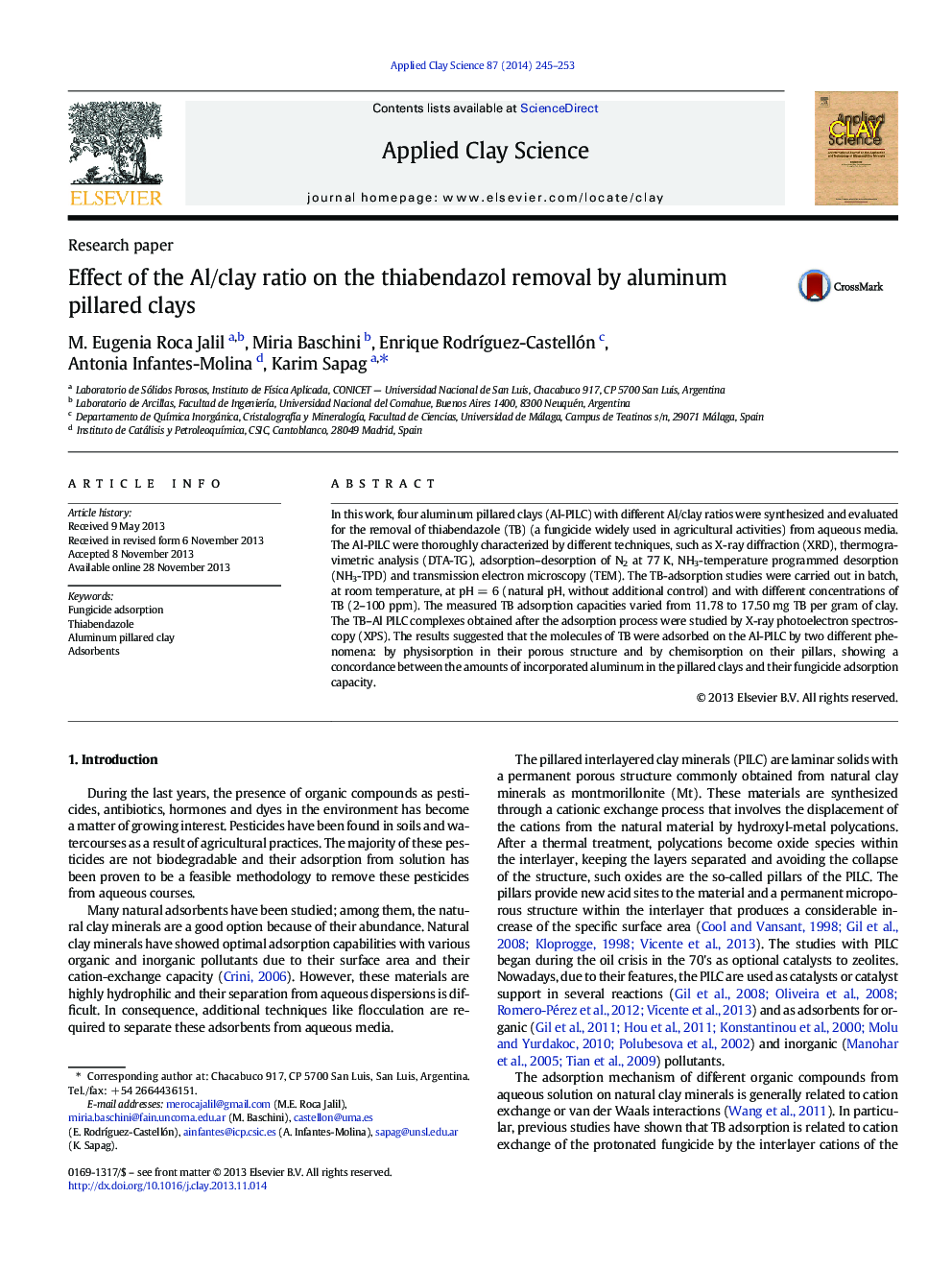| Article ID | Journal | Published Year | Pages | File Type |
|---|---|---|---|---|
| 1694971 | Applied Clay Science | 2014 | 9 Pages |
•Al-PILC with different Al/clay ratios were studied as thiabendazole adsorbents.•The Al-PILC materials showed chemisorption and physisorption of thiabendazole.•Al-PILC 10 was the best adsorbent for thiabendazole (TB) from water.
In this work, four aluminum pillared clays (Al-PILC) with different Al/clay ratios were synthesized and evaluated for the removal of thiabendazole (TB) (a fungicide widely used in agricultural activities) from aqueous media. The Al-PILC were thoroughly characterized by different techniques, such as X-ray diffraction (XRD), thermogravimetric analysis (DTA-TG), adsorption–desorption of N2 at 77 K, NH3-temperature programmed desorption (NH3-TPD) and transmission electron microscopy (TEM). The TB-adsorption studies were carried out in batch, at room temperature, at pH = 6 (natural pH, without additional control) and with different concentrations of TB (2–100 ppm). The measured TB adsorption capacities varied from 11.78 to 17.50 mg TB per gram of clay. The TB–Al PILC complexes obtained after the adsorption process were studied by X-ray photoelectron spectroscopy (XPS). The results suggested that the molecules of TB were adsorbed on the Al-PILC by two different phenomena: by physisorption in their porous structure and by chemisorption on their pillars, showing a concordance between the amounts of incorporated aluminum in the pillared clays and their fungicide adsorption capacity.
Graphical abstractFigure optionsDownload full-size imageDownload as PowerPoint slide
